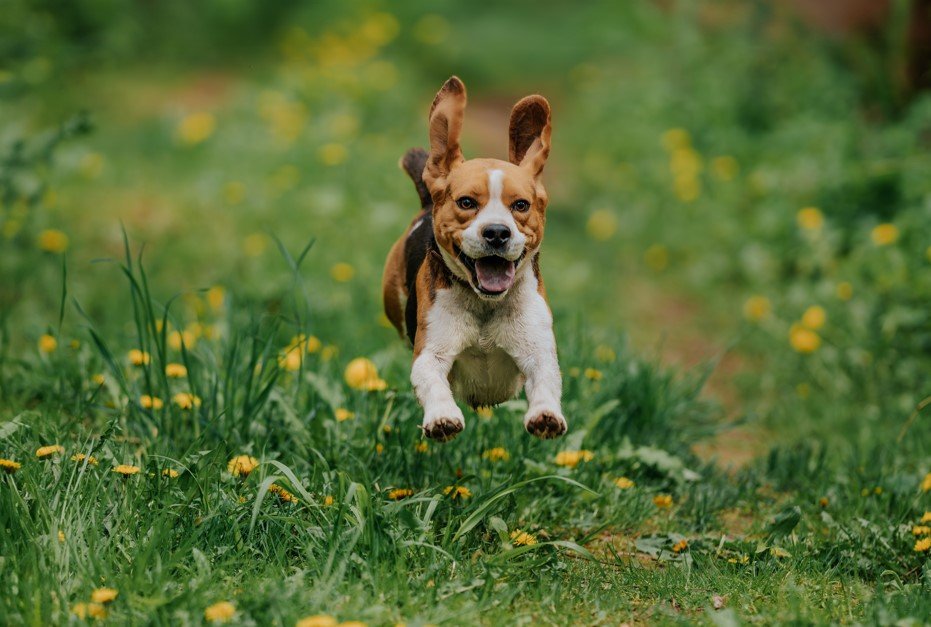Have you ever wondered why your dog seems to have a peculiar obsession with humping random objects, other dogs, or even people? This behaviour, while potentially embarrassing, is quite common among dogs. Humping can be driven by various factors, such as stress, playfulness, dominance, or hormonal changes, and is not always about sexual motivation.
This activity often starts in puppyhood when dogs begin exploring their social interactions. Both male and female dogs may find themselves caught up in a bout of humping during play or when trying to establish dominance. Remember, your furry friend isn’t trying to annoy you or cause a scene; it’s just an instinctive behaviour.
Understanding the reasons behind humping is crucial for dealing with it appropriately. Though it’s a natural behaviour, there are ways to manage it through training and redirection if it becomes problematic or occurs at inconvenient times. Knowing when to seek professional help can also be quite handy for you as a pet owner.
Understanding Canine Behaviour
Dogs communicate and establish social order through a variety of behaviours. These actions often involve body language, expressions of dominance, and playful antics that sometimes include humping. It is important to observe and understand these signs to better interact with and care for your pet.
Communication Through Body Language
Dogs use body language to express what they feel and what they want. Their tails, ears, and eyes all convey messages. A wagging tail might mean happiness, while tucked ears could indicate fear. Humping can be an aspect of this non-verbal communication, sometimes showing excitement or stress when making new friends or fun situations arise.
The position of a dog’s body, like standing tall or crouching, can also signal different things. You should watch their movement and posture closely. Reading these cues can help you understand your dog’s specific needs and emotions. Responding to these signals can improve your bond with them.
Dominance and Social Structure
Dogs, much like wolves, have a structure in their social lives. They may express their rank in the group by showing dominant behaviours, such as humping. This isn’t aggressive; it’s just one way of establishing who is who in their hierarchy. These behaviours often happen when dogs meet each other for the first time.
It’s an instinctive act and part of how they interact with those around them. It is key to differentiate between playful and dominant humping. Recognising these actions can help you address any inappropriate behaviour early on. Training and socialisation are vital in guiding these natural instincts positively and maintaining harmony.
Playfulness in Dogs
Play is an essential part of a dog’s life. This play can include chasing, barking, and sometimes humping. It’s a way for them to have fun, learn boundaries, and practise their social skills. Humping can occur during play as it helps dogs establish roles and understand their playmates better.
Engaging in play with your pet strengthens your relationship with them. You can teach appropriate behaviours and signals during these playful encounters. Encourage non-humping play styles using toys and games. It ensures your pet stays social, healthy, and happy, while also making sure that all involved have a great time.
Reasons Dogs Hump
Dogs may hump for various reasons that range from hormonal influences to simple play behaviour. Their actions can express emotions, physical needs, or social signals. Understanding these causes helps you respond appropriately.
Hormonal Influences
Hormones often play a big role in why dogs hump. Male dogs, especially those that are not neutered, may hump to express sexual interest.
These hormones can cause both males and females to engage in this behaviour. Dogs reach puberty around six to 12 months, and their hormonal changes can trigger humping as an instinctual response.
Spaying or neutering your dog may help reduce this behaviour if hormones are the main cause.
Stress or Excitement
Dogs sometimes hump when they’re stressed or excited. These emotions can make them act out in various ways, including humping.
Stress can come from new situations, loud noises, or changes in the environment. Excitement might happen during playtime or meeting new dogs.
You can help manage this by providing a calm and stable environment or redirecting their energy into playing with toys or engaging in other positive activities.
Seeking Attention
Your dog might be humping to get your attention. Dogs quickly learn that humping can make people react, either by laughing or scolding.
This reaction can encourage them to repeat the behaviour to get more attention from you. If you think your dog is doing it for this reason, try to ignore the humping and give attention when they behave well.
It’s important to spend quality time with your dog and ensure they receive enough exercise and mental stimulation.
Play Behaviour
Humping can be a normal part of play for dogs. Sometimes, dogs exhibit mounting behaviour during play with people or other dogs.
Young dogs often do this as they learn social cues. They might not have any intent beyond engaging with their playmate.
When you see this behaviour, you can redirect it by giving your dog a toy or introducing new games that help them burn off energy.
Health-Related Causes
Dogs may hump due to specific health issues or compulsive behaviours. Both physical ailments and repetitive actions can influence this behaviour. Addressing these causes can help in managing your dog’s actions effectively.
Medical Conditions
Certain medical conditions can lead to humping in dogs. Issues such as urinary tract infections, allergies, or skin irritations might make your dog uncomfortable. This discomfort sometimes results in humping as a response to their irritation or pain.
Incontinence is another medical concern that can prompt your dog to hump. It’s essential to consult your vet if humping becomes frequent or seems linked to health symptoms. Treatment for these underlying health conditions may ease or stop the behaviour.
Compulsive Disorders
Some dogs develop compulsive disorders that cause repetitive actions like humping. This could be due to stress, anxiety, or even boredom. Dogs that are left alone for long periods or lack enough physical activity may resort to humping to release pent-up energy.
Compulsive humping can also occur when there isn’t enough mental stimulation. Providing interactive toys, regular exercise, and training sessions can help reduce this compulsive behaviour. Address any signs of stress or anxiety, and seek guidance from a professional if required.
Training Approaches to Manage Humping
Teaching your dog proper behaviour can help manage humping. Using positive reinforcement, redirecting behaviour, and maintaining consistency in training are effective strategies to address this common issue.
Positive Reinforcement
Positive reinforcement involves rewarding your dog for desirable behaviour. When your dog is not humping, praise them or give a treat. This helps them understand that refraining from humping is appreciated. You can use verbal cues like “good boy” or “good girl” when rewarding them.
Keep a small bag of treats handy for spontaneous training sessions. Consistently reward your dog when they behave appropriately. Over time, they will associate good behaviour with rewards, making them more likely to repeat it.
Redirecting Behaviour
Redirecting involves shifting your dog’s focus to an appropriate activity when they start to hump. For instance, use a toy or play a game to distract them. Engage your dog in a game of fetch or tug-of-war to divert their energy.
Another strategy is to teach your dog new commands, such as “sit” or “stay”, to interrupt humping. This requires patience and practice, but it can be effective over time. When you see potential humping behaviour, command your dog to perform a learned behaviour instead.
Consistency in Training
Being consistent in your training approach is important. Make sure all family members follow the same rules and use the same commands. This prevents confusion for your dog and helps reinforce their training.
Set aside some time each day for training. Regular, short sessions are more effective than occasional long ones. Consistency helps instill discipline and aids in building a strong understanding of acceptable behaviour.
Monitor your dog’s behaviour continuously to identify triggers for humping and address them promptly. Adjust training techniques based on your dog’s progress and responsiveness.
Spaying and Neutering Effects
Spaying and neutering can change a dog’s behaviour and offer health benefits. These procedures can influence how your dog interacts with other dogs and improve their overall well-being.
Impact on Behaviour
When a dog is spayed or neutered, their hormone levels change. This often reduces certain behaviours linked to mating, like humping or mounting. The decrease in hormones, such as testosterone, can lead to less aggressive and territorial behaviours.
However, it doesn’t completely stop these actions. Dogs may still display humping or mounting as a response to excitement, stress, or even boredom. If your dog continues this behaviour, it might be helpful to redirect their attention to another activity.
Training and regular physical activity can help manage these behaviours. Providing toys or teach your dog new tricks can also keep them engaged and reduce humping instances.
Health Benefits
Spaying and neutering have important health benefits for your furry friend. For example, spaying can lower the risk of uterine infections and breast tumours in female dogs. Likewise, neutering male dogs helps prevent testicular cancer and some prostate conditions.
Moreover, these procedures can contribute to a longer, healthier life, as they reduce the urge to roam in search of a mate. This decreases the risk of getting lost or injured.
Consider consulting your vet for advice on the best time to spay or neuter your pet. It’s important to ensure you understand the process and how it can benefit your dog in the long run.
When to Consult a Professional
If your dog’s humping behaviour seems out of control or is affecting daily life, it might be time to seek professional guidance. Reaching out to the right expert can provide tailored advice for your furry friend.
Behavioural Specialists
A behavioural specialist can help if your dog is humping other dogs or objects too often. They can identify specific triggers and patterns in your dog’s behaviour. With their help, you can understand the root causes, like dominance or play, and work on changing these habits.
Training tailored by an expert may involve positive reinforcement techniques. They can guide you to manage the behaviour effectively using consistent commands and signals. Early intervention can prevent the habit from becoming ingrained.
Veterinary Advice
If your dog’s humping is caused by an underlying health issue, a vet is essential. They can examine your pet to rule out medical causes of humping, such as anxiety or hormonal imbalances. Sometimes, medical treatment may be required.
A vet can also advise on medications that might help reduce stress-related humping. Working with a vet ensures your dog’s health isn’t compromised while addressing behavioural concerns. Regular check-ups will also help monitor any changes in behaviour over time.

